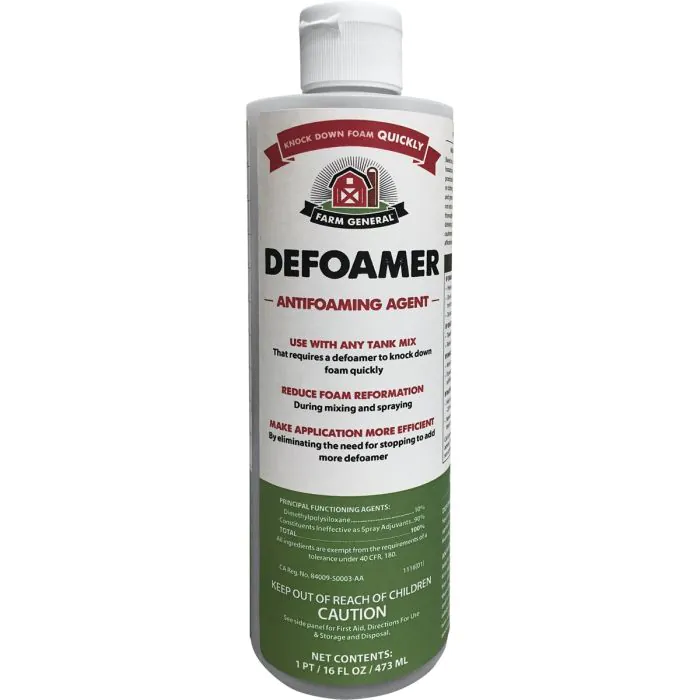Guidelines and Proven Ways for Using Chemical Defoamer in Different Scenarios
Guidelines and Proven Ways for Using Chemical Defoamer in Different Scenarios
Blog Article
Just How a Chemical Defoamer Can Enhance Effectiveness in Your Workflow and Procedures
In today's affordable commercial landscape, operational effectiveness is vital, and the role of a chemical defoamer can not be neglected. By dealing with foam-related difficulties that interrupt processes, defoamers not just promote smoother procedures yet likewise contribute to cost savings and boosted item high quality.
Comprehending Chemical Defoamers
Chemical defoamers play an important role in various commercial processes by efficiently decreasing and preventing foam development. Foaming can lead to functional ineffectiveness, increased manufacturing expenses, and jeopardized item top quality. Defoamers are specialized chemical additives designed to interfere with the stability of foam bubbles, thereby making it possible for smoother processing and improved efficiency across numerous markets, including food and drink, pharmaceuticals, and wastewater treatment.

These representatives normally include surfactants, oils, or polymeric substances that lower the surface area tension of the liquid, facilitating the collapse of foam. The system by which defoamers operate often includes the destabilization of foam frameworks, permitting quicker water drainage of liquid and the launch of trapped air. Different solutions are tailored to certain applications, considering aspects such as compatibility with the system, temperature, and the nature of the liquid being dealt with.
Understanding the structure and capability of chemical defoamers is important for picking the appropriate product for an offered application. By optimizing defoamer choice based upon procedure requirements, markets can boost operational effectiveness, alleviate foam-related obstacles, and ultimately enhance total productivity.
Benefits of Making Use Of Defoamers
Utilizing defoamers can significantly improve functional effectiveness across various markets by properly mitigating foam-related issues. The existence of foam can interrupt procedures, resulting in enhanced downtime, decreased performance, and possible top quality degradation in output. Defoamers help fight these difficulties by damaging down foam frameworks, consequently permitting for smoother procedures.
Among the key advantages of making use of defoamers is the reduction of waste and revamp. By lessening foam development, defoamers improve the uniformity of procedures, making sure that products are utilized effectively. This not only reduces operational prices however likewise adds to sustainability efforts by minimizing source usage.
In addition, defoamers can improve product high quality. In manufacturing setups, too much foam can result in inconsistencies in product attributes, affecting customer complete satisfaction. By managing foam levels, defoamers help keep the wanted physical buildings of items.

Applications in Different Industries
The performance of defoamers expands across a broad about his variety of sectors, where their application addresses specific foam-related challenges fundamental to every field. In the basics food and drink industry, defoamers are essential for enhancing manufacturing procedures, such as developing and milk handling, where too much foam can hinder flow rates and reduce effectiveness. By lessening foam, these representatives improve item high quality and uniformity.
In the chemical production market, defoamers are used in procedures like paint manufacturing and wastewater therapy. Right here, they stop foam development description that can conflict with blending and different phases, thus enhancing the general effectiveness and efficiency of operations.
In pharmaceuticals, defoamers play a vital role in the formulation of fluid drugs, making certain correct dose and stability by managing foam during mixing and storage space. (Chemical Defoamer)
In addition, in the farming market, defoamers are utilized in chemical solutions to boost application efficiency and lessen waste.
Selecting the Right Defoamer
Picking the proper defoamer is vital for accomplishing optimal performance in numerous applications. The selection process need to begin with a detailed understanding of the particular concerns at hand, consisting of the kind of foam present, the handling conditions, and the chemical compatibility with other solution components.
Defoamers are developed from a selection of products, consisting of silicone, mineral oils, and fats. Identifying the best structure is important, as various products exhibit varying effectiveness in varied settings. Silicone-based defoamers are typically preferred in high-temperature applications due to their security, while organic defoamers might be a lot more suitable for water-based systems.
In addition, think about the defoamer's influence on the end product. Some formulas can modify the practical or visual properties, making it necessary to select a defoamer that fulfills product specs without compromising high quality.
Examining is one more essential action in picking a defoamer. Small-scale trials can supply valuable understandings right into the defoamer's performance, enabling changes before full-blown execution. By thoroughly examining these factors, companies can boost performance and guarantee that the defoamer successfully fulfills their operational requirements.
Finest Practices for Execution
Implementing a defoamer efficiently needs mindful preparation and adherence to best practices to maximize its effectiveness. Perform a comprehensive assessment of the particular application and foam attributes. Recognizing the kind and resource of foam will certainly direct the option of the most appropriate defoamer formula.
Next, establish the ideal dosage (Chemical Defoamer). Begin with a small-scale trial to identify the minimum efficient concentration, as extreme use can result in unfavorable impacts on product high quality or operational efficiency
Monitoring and adjusting the application method is essential; guarantee that the defoamer is introduced at the right point while doing so for optimal influence, such as throughout mixing or right away after foam formation.

In addition, maintain clear interaction with all pertinent workers to make sure consistent application methods and to share understandings on efficiency results.
Final Thought
In verdict, the utilization of chemical defoamers plays a pivotal role in enhancing functional performance across varied markets. Ultimately, the consolidation of defoamers into industrial processes fosters reliability and contributes to overall performance improvement.

In the food and drink sector, defoamers are important for maximizing production processes, such as developing and milk processing, where extreme foam can prevent circulation rates and decrease performance. Silicone-based defoamers are often favored in high-temperature applications due to their security, while natural defoamers might be more appropriate for water-based systems.
Report this page